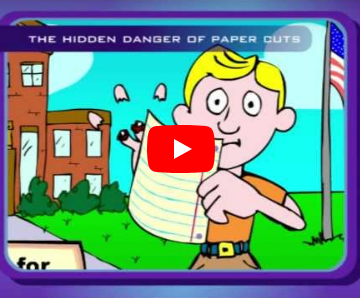Every time Amazon has changed the name of its video service over the years, I’ve scratched my head. Why keep changing? Youtube doesn’t change. Vimeo doesn’t change. Netflix… well, it tried rebranding its DVD delivery service as Qwikster once, but that didn’t take.
Amazon is a successful company. I use many of their services. As a filmmaker, my distributors and I manage multiple items through the Amazon Video Direct portal. (Check out Hero of the Underworld and H.P. Lovecraft’s The Other Gods, for example.)
But why do they keep changing the name of their video streaming brand? I did some research and gave it some thought. Here’s a history.

2006: Amazon Unbox
Amazon Unbox, sometimes branded as Amazon Unbox Video Downloads, was an early way to download and watch digital copies of movies and TV shows. The service even had a tie-in with Tivo. The word “unbox” has a double meaning. First, that consumers love to open, or “unbox” physical purchases from companies like Amazon, but in this case there actually IS NO BOX when you’re purchasing a digital good.

2008: Amazon Video On Demand
Amazon moved away from the Unbox branding, changing to the term “video on demand.” Video on demand (or VOD) is an industry standard phrase, so perhaps Amazon used it to help explain the service more than the confusing “unbox” could. A drawback from a branding point of view is that Amazon can’t really own or trademark the phrase. At some point during this time, they changed the logo from using the yellow smile, and instead introduced the green play button. At this point all videos were still pay-per-video, no “free” tier.
 2011: Amazon Instant Video
2011: Amazon Instant Video
As a way to push their Prime subscription service, Amazon added access to 5000 movies and TV shows for their Prime subscribers. Generally watching streamed content (including pay-per-video items) was termed Amazon Instant Video. Titles that were free access to Prime subscribers were under the Amazon Prime Instant Video moniker.
It was around this time that I started hearing people say they were watching videos on “Amazon Prime” even though that was not the name of either product. As a filmmaker, I was frustrated when talking about Amazon’s online distribution with my peers and potential audiences, because I would often have to stop and define terms. Putting one’s product on Amazon Instant Video meant you could charge “buy” and “rental” prices, but putting it on Amazon Prime Instant Video meant viewers wouldn’t pay specifically for your video. Also, filmmakers had different levels of control in managing listings and income from the two streams. Calling both services “Amazon Prime” colloquially was fuzzy terminology.
 2015: Amazon Video
2015: Amazon Video
Amazon simplified, dropping the word “instant.” Perhaps the term was useful at first in expressing the idea of streaming (not buying a DVD), but by 2015 the public inherently understood the concept.
It seems there was also a subtle move towards material design during this phase. See the difference in the green circles in the two logos above. I grabbed them randomly from the internet, but later discovered the difference in size and shape between them. (Presumably, they had dimensional and flat versions of each logo.)

2018: Prime Video
I recently logged into my phone and saw that my Amazon Video app had a new logo. Soon, the logo on the Roku had changed as well. So now, in 2018, Amazon has given in to calling their service what the public was calling it anyway, Prime Video. The color is no longer green, instead, they’ve brought in blue, to work with their overall Prime branding.
Over in my Amazon Video Direct (now Prime Video Direct) dashboard, where I manage my uploaded movies, I see that “Included with Prime” videos are now “Prime Subscription Access (Included with Prime).” I can only imagine this compound phrase is something creators see, but not the general public.
As a name for a streaming service, Prime Video is actually pretty good. It’s short and suggests “the best” in video offerings.
However, Amazon still has two video services in one, and the use of “Prime” in the name for both makes my teeth grind. Let’s say I’m an Amazon Prime member. I login to Prime Video and what do I find? Many videos to watch that are covered under the Prime membership. What else do I find? Many, many items that are NOT FREE to Prime members. And yet… they are on Prime Video.
Perhaps in a few years, no one will give this a second thought. Maybe everyone will be comfortable with all videos on Amazon termed Prime Video, both free Prime videos and Prime videos you pay for.
The definition will shift. But for now, the fuzziness makes me itch.


